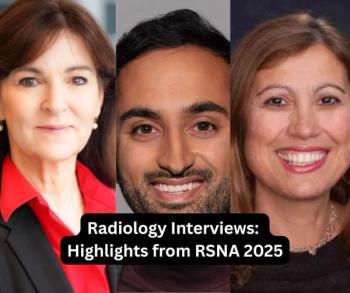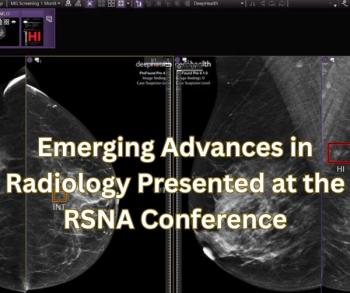
What a Large CT Study Reveals About Potential Kidney Injury, Diabetes and Risk Stratification
The use of contrast-enhanced computed tomography (CECT) was associated with more than double the risk of contrast-induced acute kidney injury (CI-AKI) in patients with diabetes and an estimated glomerular filtration rate (eGFR) less than 30 mL/min/1.73 m2 in comparison to the use of non-contrast CT in this population.
Patients with an estimated glomerular filtration rate (eGFR) below 30 mL/min/1.73 m2 are 78 percent more likely to have a contrast-induced acute kidney injury (CI-AKI), according to newly reported retrospective data from over 75,000 patients who had a contrast-enhanced computed tomography (CECT) exam or non-contrast CT.
For the multicenter study, recently reported in
For patients who had CECT, the study authors found that CI-AKI was 34 percent more likely in patients who had an eGFR of 30 to 44 mL/min/1.73 m2 and 78 percent more likely for those who had an eGFR less than 30 mL/min/1.73 m2 are in comparison to patients who had non-contrast CT.
In a subgroup analysis looking at the impact of diabetes for patients with eGFR less than 30 mL/min/1.73 m2 undergoing CECT, the researchers noted that diabetes more than doubled the risk of CI-AKI with an odds ratio (OR) of 2.12 in comparison to those having non-contrast CT. However, the authors still noted a 62 percent higher risk of CI-AKI in patients without diabetes who had less than a 30 mL/min/1.73 m2 eGFR.
“While diabetes mellitus and chronic kidney disease are known risk factors for contrast material-induced AKI (CI-AKI), there have been no large studies evaluating the combined effects of diabetic status and estimated glomerular filtration rate (eGFR) on the odds of CI-AKI,” wrote Tse-Hsuan Su, M.D., M.S., who is affiliated with the Department of Emergency Medicine at Chang Gung Memorial Hospital in Taipei, Taiwan, and colleagues. “In our multicenter retrospective study involving 75,328 hospitalized and emergency department patients, we demonstrated that patients with an eGFR less than 30 mL/min/1.73 m2 had higher odds of developing CI-AKI, regardless of diabetic status.”
However, Su and colleagues pointed out that diabetes was associated with an 83 percent higher risk of CI-AKI in patients with an eGFR of 30 to 44 mL/min/1.73 m2 in comparison to a 14 percent elevated risk of CI-AKI in those without diabetes. For patients with less than a 30 mL/min/1.73 m2 eGFR, diabetes accounted for a 70 percent higher likelihood of 30-day dialysis in comparison to those who did not have diabetes, according to the study authors.
“ … the eGFR threshold for the likelihood of CI-AKI should be adjusted for patients with diabetes, especially for those with an eGFR of 30-44 mL/min/1.73 m2 and less than 30 mL/min/1.73 m2,” emphasized Su and colleagues.
(Editor’s note: For related articles, see “
In an
While acknowledging the study authors’ findings of elevated CI-AKI risks in patients with a combination of diabetes and an eGFR of 30-44 mL/min/1.73 m2 after propensity score matching, Dr. Davenport said further exploration in randomized trials is necessary prior to amending current protocols.
“To my knowledge, (the study authors) are showing for the first time in a propensity-matched design that the presence of diabetes mellitus may remain a relevant covariate for CI-AKI following contrast-enhanced CT,” noted Dr. Davenport, a William Martel Professor of Radiology and Urology, and vice-chair in the Department of Radiology at Michigan Medicine. “However, it is necessary to replicate these results before recommending modifications to existing guidelines.”
Beyond the inherent limitations of an observational study, the researchers conceded possible confounding factors that may have affected reported CI-AKI estimates. Pointing out that only low-osmolar contrast material was utilized for the hospitalized and emergency department patients that comprised the study cohort, the study authors said the study findings may have limited application in other patient settings or facilities that utilize other contrast agents.
Newsletter
Stay at the forefront of radiology with the Diagnostic Imaging newsletter, delivering the latest news, clinical insights, and imaging advancements for today’s radiologists.




























